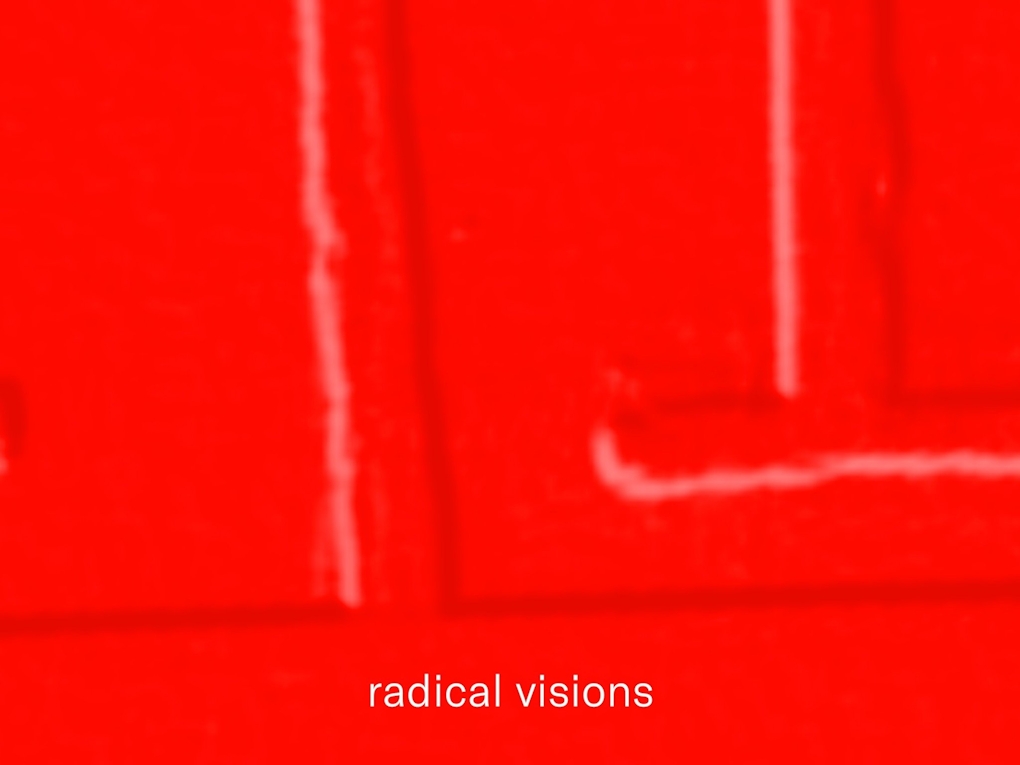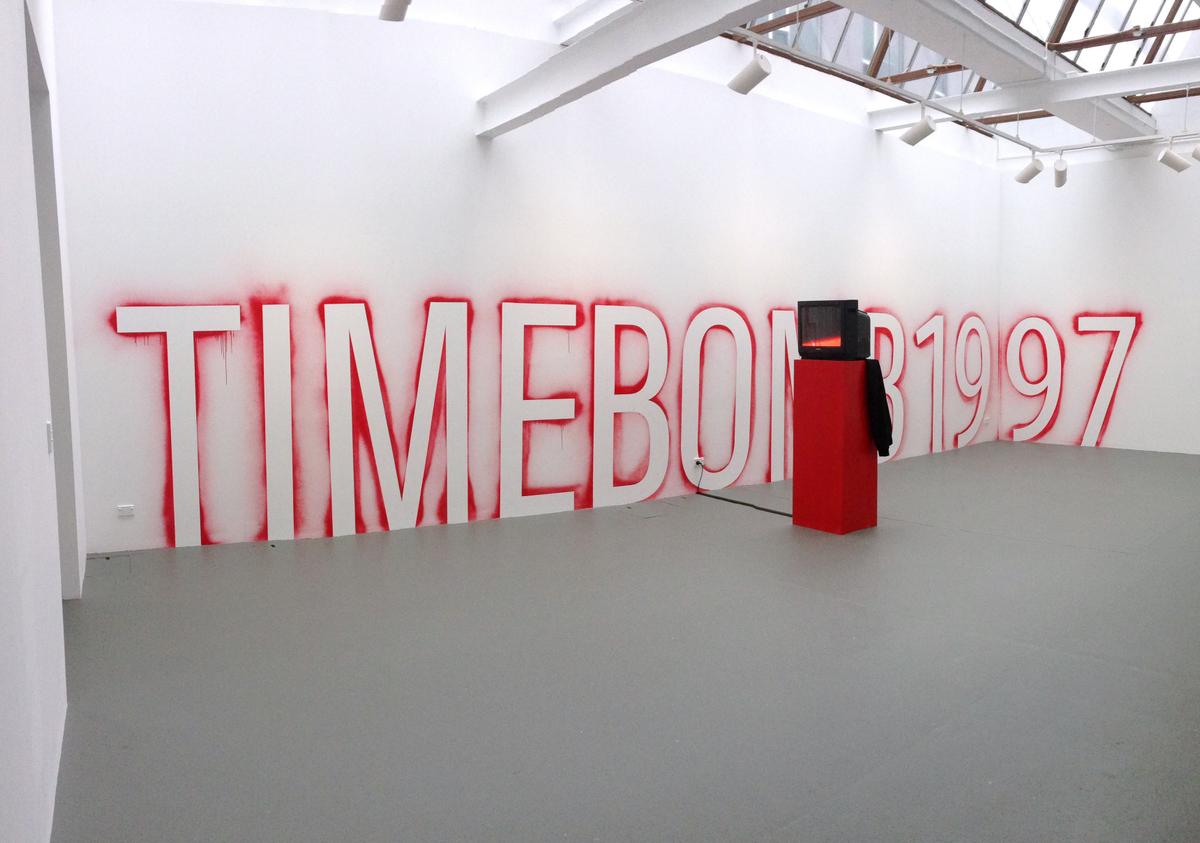Described at the time by Annette King as "a hatchet job on the welfare state", Judy Rymer’s 1997 documentary Time Bomb(1), is the subject of Tim Wagg’s False Paths. Broadcast twenty years ago, Rymer’s documentary sought to evaluate the ongoing repercussions of Aotearoa’s welfare provisions from a neoliberal lens of self-sufficiency rhetoric. In doing so it is perversely suffused with images of wealth inequality, presumably to highlight the disenfranchisement perceived to be so endemic to welfare dependency. And yet under Wagg’s orchestration, his editing down of Rymer’s feature length documentary into a ten minute vignette, what we get is a vivid portrait of the structural model, the organisational spectrum this stratification of society serves. This is compelling evinced in Wagg’s editing, clipping Rymer’s cinematography down into jarringly divisive scenes, so that the emblematic symbols of wealth, beachside mansions, high-rise apartments, glossy cars are vividly contrasted against state houses in disrepair, graffiti covered fences, alcohol abuse, and roaming “street” youths. This stratified vision is compounded by Wagg’s narration of the film, particularly in his recount of the distorted lens effects used by Rymer in her interviews with welfare recipients. This was similarly noted by Kim Hill at the time of the documentary’s initial screening, an accusation Rymer defended by saying that she wanted the beneficiaries’ lives to seem more drab, more grim, in order to highlight their isolation from society.(2)
This accentuation of disaffection, of the beneficiary system as hostile environment, breeding crime, breeding dissatisfaction, breeding dependency, is a key element of Wagg’s account of Rymer’s documentary. Indeed under Wagg’s edit the documentary focuses less on the alienation of the immiserated, but rather their disaffection, their ticking time bomb. This doubling of the beneficiary not only as dependant, financial burden but also as threat, is further compounded by the indignation of the neoliberal commentators who prop up Rymer’s film. “Roger Douglas, Alan Gibbs, Lindsay Perigo…" Wagg’s narrator lists them off, skewing the narrative. Making it explicit. Beneficiaries as target. And yet, the bigger revelation isn’t this partisan viewpoint, but rather the entire skeleton. The whole system is orchestrated. It’s structural. It’s Aligned. It’s encoded. This bludgeoning of the welfare state, what we might as well call neoliberal indignation, is an updating of capitalism’s invisible hand. This residual angst is spectral. It’s the spectre of transformation looking for a home.

Still from False Paths (2017) Tim Wagg. The Engine Room, Massey University
Where once Adam Smith ascribed a moral clarity to capitalism’s valuing of labour, of a transformed product, of a capitalisation of base material, Marx saw the structural exploitation, the very violence exacted upon the underprivileged. Moreover, Marx reveals not only the superstructure that exploits the labouring classes, but its active marginalisation, its ability to render them invisible.(3) Always the obscured, always the last in a long line of abuse, nowhere seen more so than in the tumultuous, vindictive nationalisms that catapulted Europe into the simultaneous wars of late Modernity. Enter then, a quelling of unrest, a (re)settling of the disturbed spectral field, a Keynesian model of reform, a new deal. Actively adapted and promulgated by the first Labour’s government’s welfare state New Zealand, ushered in pensions, unemployment benefits, state housing. What we get is a transformation of capitalism’s spectre, enacted now to elevate everyone’s wellbeing. New economic paradigm geared not towards the frugal management of profit but rather the sharing of the bounty, a capitalisation of the transformative product to the collective care for all. And yet, because the Keynesian model neglected so many attenuating costs, such stability, such promise lasted for less than quarter of a century, crashing into the rising costs associated with petroleum scarcity in the 1970s, the refusal of so called oedipal wage, failure of colonial exploitation models. Enter here neoliberalism’s rejigging of capitalisms’ spectre, its invisible economy, no longer as the care for all, but instead as the care of each according to their own.
The genius of the neoliberal model is to strip morality clear from any economic paradigm. In effect they freed capitalism to debase itself, to make it accountable only to itself. Enter then a clear account of capitalism’s thanatological prescript. A death drive in which capitalism’s spectre becomes ominous, omnivorous a leveller.(4) This spectre is turned loose on the individual. The self becomes prime for recrimination, and self-gain. The vector of the self-made begins to overshadow that invisible spectre, that structural management of privilege. No wonder neoliberalism exacerbates wealth inequality. No wonder there’s austerity for everyone but the exception. They are not just a paradigm of accumulation, of the care for oneself, but emblematic, vindictive judges. Their indignation spurs the very logic of its self-flagellating drive. It traps us in what William Connolly calls "passive nihilism", "the formal acceptance" of an "encumbrance already in place"; climate change, student debt, racism, gender inequality.(5)

Installation view of False Paths (2017) Tim Wagg. The Engine Room, Massey University
This despair is neatly marked by Wagg’s draping of a hoodie around his monitor plinth. Adopting death metals’ insignia to scrawl the words neoliberalism, this hoodie, mimes that familiar icon of the black bloc, of the rascaille, for its own ends. Especially if we extend Timothy Morton’s pessimistic heightening of hypocrisy as a state of doom that indulges in an embrace with the thanatological spirit. Here then, that invisible spectre, that vector of abuse frees itself from the familiar drive to moralise capitalism, to seek to couch it in reproductive terms, to ascribe to its values of productivity, the more it is a deadening of the senses, a capitulation to its meaninglessness. As Mark Featherstone explains, whereas the neoliberal turn emphasises the primacy of economic individualism, "where I must wait for what I want, this recoding of a structural malfeasance, of capitalism as an amoral vector of abuse, ‘entails the collapse of the period of deferral into a dense moment of meaningless satisfaction and despair where I want for nothing but also lose my reason for living'".(6) Which is why Wagg is so easily able to lyricise this moment, turning an economic paradigm into merely yet another Norwegian black metal band. Here it’s worth heeding Eugene Thacker:
"Pessimism’s lyricism of failure gives it the structure of music. What time is to the music of sorrow, reason is to a philosophy of the worst. Pessimism’s two major keys are moral and metaphysical pessimism, its subjective and objective poles, an attitude towards the world and a claim about the world. For moral pessimism, it is better not to have been born at all; for metaphysical pessimism, this is the worst of all possible worlds."(7)
Alternatively note how Morton couches his application of doom as a symphonic condition, a swallowing of the subject:
"Conventionally, doom is a decree or an ordinance: a directive. Doom can also refer to judgment, law, the faculty of judging, or the final judgment that happens after the end of the world. Yet doom is also what we deem – opinion or discernment".(8)
In Morton’s hands doom is the register in which we experience the hyperobject. Not so simply the ontological boundary of life, but the spectrum in which we are stitched. It extends beyond the corporeal, into the sublime. Defiantly not the infinite as an expanse with no end, but rather an accountable reality, a tactile, viscous nothingness that contrasts completely with the voids that so characterise the “after” of a messianic Weltanschauung. No! What we experience is corporeal doom, the induction into a stream that occludes us. That is spectral. That minimises the exceptionalism of human endeavour.
It is obvious that Wagg targets not neoliberalism per say, but the methodology through which structural inequality is maintained. It’s not a simple critique. It’s not neoliberalism is bad. It’s not the welfare state is good. It’s more nuanced than that. There’s a reason why Wagg can get these agents to talk to him.(9) In fact in Wagg’s hands the hyperobject of capitalism, its externality has never seemed so valid. Indeed False Paths ticks with a feral precocity, like the stalked youth of Rymer’s film there is a palpable tension to Wagg’s editing. Like the frenzied distortion of the alienated youth, or the gloss of emblematic symbols of wealth accumulation, not to mention its opening with the iconography of cultural capital, (the new, at the time, national museum contrasted with Canterbury’s, old money, great hall). The rhetoric here isn’t self-reliance, bootstrap endeavour. No it is of a fundamental crack, a breaking apart, the chaotic moment, in which capitalisms very volatility is its substance. As Nick Land points out:
"All the supposedly alien sources of disorder which capital represents as the exteriority of its end, such as working class agitation, feminism, drugs, racial migration, the disintegration of the family, are essential to its own development."(10)
Given this, internalising, it’s worth pointing out that the continual tendency in which we evaluate this spectre of capitalism, this thanatological prescript as merely an alienating process is entirely pointless. Again as Land makes clear:
"...modern existence is understood as profoundly deadened by the real submission of humane values to an impersonal productivity, which is itself comprehended as the expression of dead or petrified labour exerting a vampiric power over the living. The bloodless zombie proletarian is to be resuscitated by the political therapist, ideologically cured of the unholy love for the undead, and bonded to a new eternal life of social reproduction."(11)
This premise, one of self-regard is precisely the sort of false flag that Wagg nails to the wall. Whilst purporting to merely reveal the structural bias of a polarising, partisan documentary, Wagg instead unveils the shared redundancy of the humanist reading of capitalism, which keeps revering that isolated individual as an exploitable agent rather than simply a mechanical device. No wonder then that the thanatological spirit pervades Wagg’s show, it’s constant tickling of the narrative, underscoring his film less as the metronomic threat of society’s exacerbation of income inequality, the more it is the very heartbeat of a system that has moved beyond the orchestrations of humanist logic. Consequently what Wagg’s show makes clear is that any meaningful change won’t result from either a resurrection of the welfare state nor the continual embrace of the self-aggrandizing narrative (you can do it too) of neoliberalism’s indignation. For that vector we ought to heed the pessimistic drive of his lexicographic hoodie. It’s only in that doom that we see the whole spectrum, not just this economic model, but the apparatus it’s warped into.

